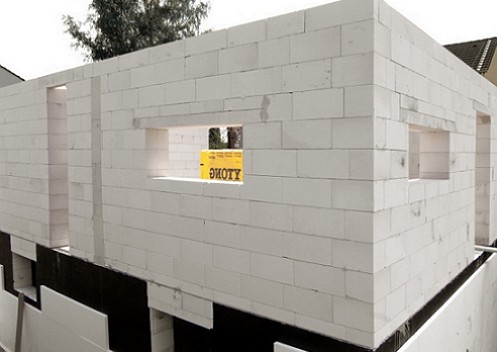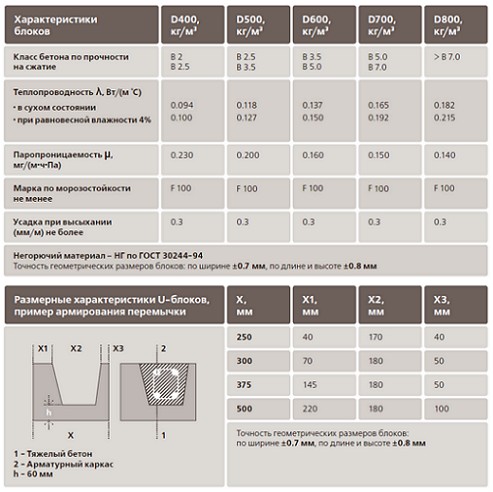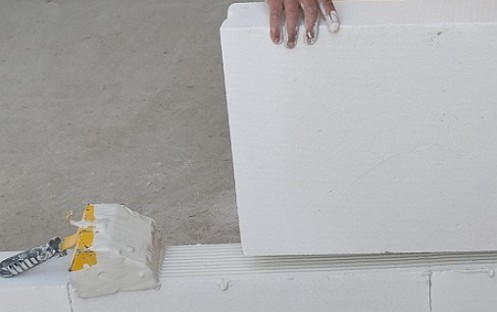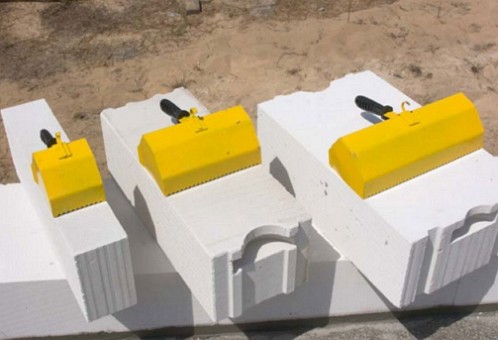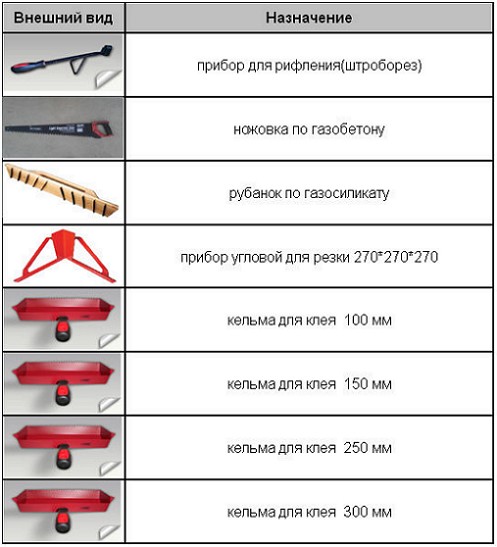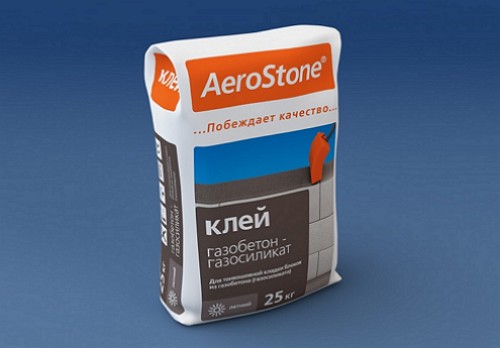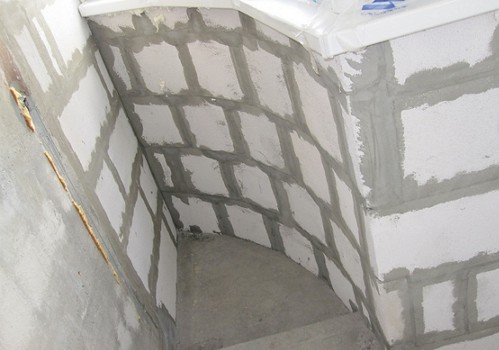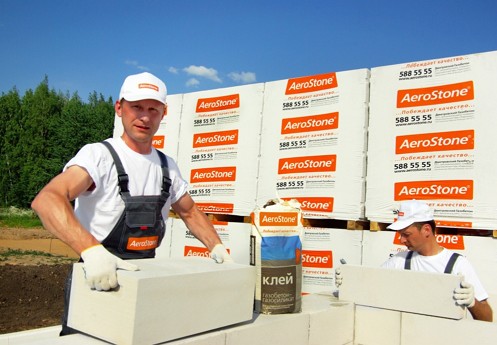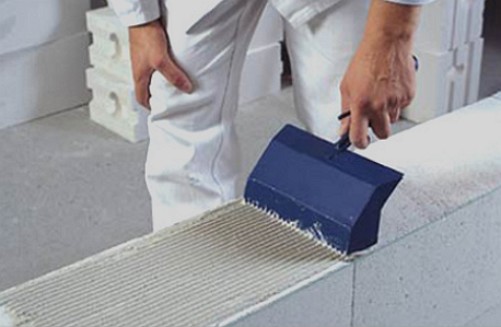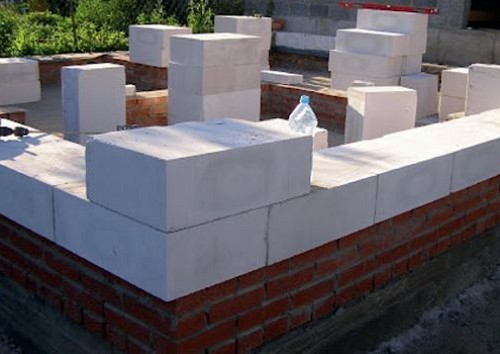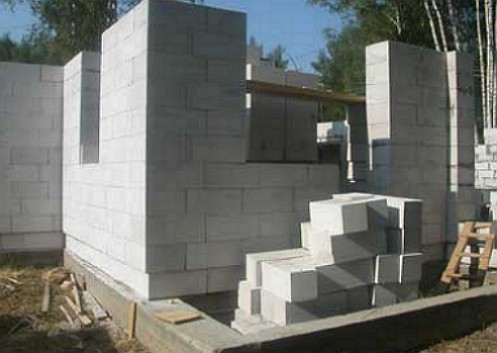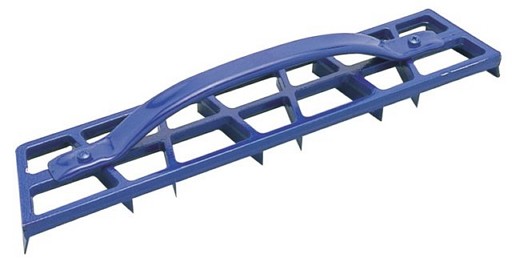Modern technology for the production of gas silicate blocks gradually displaces expensive bricks. The very fact that the house, erected from the gas silicate block, turns out to be cheaper by one and a half times, makes the Builder think. Advantageous price, simple stowage technology, as well as the accumulated experience of professionals allow building the first row of the future house from a silicate block.
Content
What are gas silicate blocks
Gas silicate blocks are a building material intended for the erection of bearing walls and internal partitions.
Excellent performance characteristics of gas-silicate blocks allow to make stacking of blocks quickly and qualitatively. Among the indicators of the material the most significant are:
• accuracy of geometric dimensions and shapes
• high thermal insulation index
• Low specific gravity.
The wall or partition formed from the gas silicate block is a monolithic surface, which is subject to subsequent finishing.
Convenience of work with the gas silicate block is confirmed by the practice of doing the work: the material can be sawed without a problem with a hacksaw to create the wall surfaces of a curvilinear configuration.
However, the technology of stacking gas silicate blocks has some specificity, which must be remembered.
Acquaintance with technology will begin with consideration of ways of stacking gas silicate blocks.
Ways of laying blocks
There are the following ways:
• cement (cement-sand mortar)
• glutinous (dry glutinous mixture).
The whole secret of laying blocks with a cement or adhesive method will be the thickness of the seam. Using cement method stacking, the thickness of the seam reaches from six to ten millimeters. Using adhesive method The thickness of the seam is up to three millimeters.
Therefore, the installation of gas silicate blocks on glue, in the opinion and advice of professionals, can be considered more practical and economical way. Recall that the consumption of adhesive in comparison with the cement slurry will be less than five times.
The density of the adhesive solution is 1400 kg / cm 2, and the cement mortar is 1700 kg / cm 2.
True, the adhesive solution is more expensive than the cement mortar. Expecting the preliminary cost of laying gas silicate blocks, helps out the technological work on laying and savvy craftsmen.
As your hands erect a partition of the blocks, this video will tell.
Technology of laying gas silicate blocks
tool used for laying blocks
Laying blocks of gas silicate with their own hands can be carried out using the following tool designed for such operations:
• solution preparation
• application of solution
• aligning blocks
• Surface treatment blocks.
To prepare the working solution use a hand-held drill with a nozzle and a plastic bucket. For ease of application of the mortar, trowels of various widths and trowel trowels are used, which are solution tanks. To level the position of the blocks, use a construction level and a wooden hammer. The processing of gas silicate blocks is carried out using a gage of a marking tool, a saw, a tool for cutting connection grooves, a float and a soft brush to remove dust and material residues.
gas silicate adhesive preparation
For stacking blocks I use a special glue, which is a dry batch mix consisting of:
• a mixture of fractional sand
• chemical additives
• Portland cement.
In addition, the composition of the dry mixture includes additives that retain heat and moisture, giving strength to the joint and preventing the formation of cracks.
Preparation of the gas silicate adhesive is carried out immediately before application. In a container of clean water, a dry mixture is gradually added, the solution is mixed until the consistency of the paste, using a drill with a nozzle. The solution is aged for 5 minutes and rinsed again. Now it is possible to carry out thin-layered masonry.
The prepared glutinous solution retains its qualities for an hour and a half.
For application, it is better to give preference to glue mixtures:
• Aero Stone®
• Thermocube®
• Bonolit
• Poritep
• Glue КS-3.
Professionals advise
Choose a glutinous mixture with which you have worked once and will cope with the task. The high price of dry glue mixtures for blocks implies the ability to apply a thin layer of glue. If you can not apply a thin layer of adhesive mortar, it is better to reject the idea of gluing blocks at once.
Find a professional mason who will be able to apply glue with a thickness of 2-3 mm and will ensure the gluing of the block.
Check the quality of the adhesive solution on a separate block. Using a serrated trowel, apply glue on the side surface of a separate block. The quality can be assessed by the following parameters: the adhesive mixture is well distributed between the teeth, the resulting furrows do not merge. This indicates the correct preparation of the glue mixture.
block laying
The technology of laying blocks of gas silicate assumes the existence of a foundation with a relatively flat surface. The surface of the foundation is covered with a waterproofing layer. The laying of blocks starts from a high corner of the foundation, which is determined using the building level. The most important, regardless of the chosen method of masonry, is the first row of blocks.
Professionals put the first row of blocks only on cement mortar, while simultaneously aligning the overall surface of the foundation. Given the high hygroscopic qualities of the cellular concrete of the block, the wetting of its bottom surface is carried out before installing the unit. Thus, the moisture transfer from the solution to the silicate block is excluded. All subsequent blocks are laid in continuation of the horizontal row.
Guides for external walls are installed along the perimeter, using pegs with a tight twine.
Each successive block is leveled using a hammer, checking the quality of the installation using the building level. All unevenness and the adhesive solution on the surface of the blocks must be removed. To do this, use a grater or a plane, dust or small debris sweep away with a brush.
Professionals advise
Putting blocks on the cement slurry with a density of 2000 kg / cm 2, the appearance of "cold bridges" in the seams is not ruled out. The most practical option for stacking blocks is the installation in two rows. Thus, the possibility of forming "cold bridges" is excluded, and then in the house of gas-silicate brick it will be cozy in the home.



